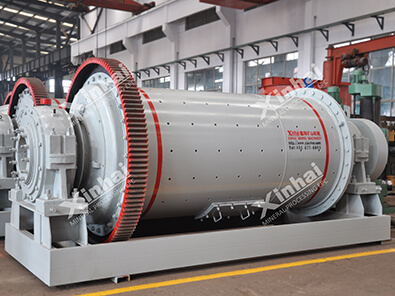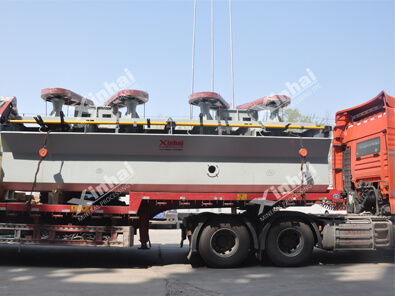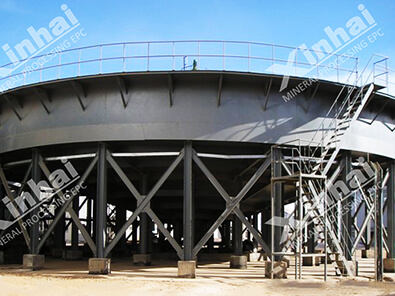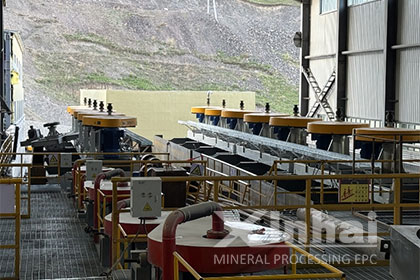The Revolutionary Application of Lithium in the Battery Industry
 Essow
Essow
 Jan 21, 2024
Jan 21, 2024
 1913
1913
If you want to know more details about equipment, solutions, etc, please click the button below for free consultation, or leave your requirements!
The battery industry has experienced a paradigm shift with the introduction of lithium-based batteries. Lithium, an exceptional element with remarkable properties, has revolutionized energy storage, powering everything from portable electronics to electric vehicles and grid-level energy systems. This article explores the extensive applications of lithium in the battery industry, highlighting its pivotal role in shaping the future of energy storage.

(Lithium Ore)
01 Lithium-Ion Batteries: Powering the Modern World
BackLithium-ion batteries (Li-ion) have emerged as the gold standard for portable electronics, electric vehicles (EVs), and renewable energy storage. The key advantages of Li-ion batteries include high energy density, lightweight design, and longer cycle life. Lithium serves as a vital element in the battery's cathode, allowing efficient storage and release of electrical energy. This section delves into the structure and working principle of Li-ion batteries, highlighting the role of lithium in their exceptional performance.
Lithium-ion batteries (Li-ion) have become the backbone of the modern world, powering an array of devices and applications. These batteries have revolutionized portable electronics, electric vehicles, and renewable energy storage systems. Let's delve deeper into the fascinating world of lithium-ion batteries and their role in powering the modern world.
1. Structure and Working Principle
Lithium-ion batteries consist of several key components, including a cathode, an anode, a separator, and an electrolyte. The cathode is typically made of lithium-based compounds such as lithium cobalt oxide (LiCoO2), lithium iron phosphate (LiFePO4), or lithium nickel manganese cobalt oxide (Li(NiMnCo)O2). The anode is usually made of carbon, and the electrolyte is a lithium salt dissolved in an organic solvent. The separator prevents direct contact between the cathode and anode while allowing the flow of lithium ions.
During charging, lithium ions move from the cathode to the anode through the electrolyte, where they are stored in the anode's structure. When discharging, the lithium ions move back to the cathode, releasing electrical energy that can power various devices.
2. High Energy Density
One of the key advantages of lithium-ion batteries is their high energy density. They can store a significant amount of energy in a relatively small and lightweight package. This characteristic makes them ideal for portable electronics, where compactness and long battery life are essential.
3. Lightweight Design
Lithium-ion batteries are known for their lightweight design, which is primarily due to the low atomic weight of lithium. This property is particularly important in applications such as smartphones, laptops, and wearable devices, where minimizing weight is crucial for user comfort and portability.
4. Longer Cycle Life
Lithium-ion batteries typically offer longer cycle life compared to other rechargeable battery technologies. A cycle refers to one complete charge and discharge process. The ability to withstand numerous cycles before experiencing a significant drop in performance makes lithium-ion batteries highly durable and reliable.
5. Fast Charging Capability
Lithium-ion batteries are capable of fast charging, allowing users to recharge their devices quickly. This feature is particularly valuable in today's fast-paced world, where time is of the essence. Rapid charging capabilities make lithium-ion batteries suitable for applications ranging from smartphones to electric vehicles.
6. Safety Considerations
Safety is a critical aspect of battery technology, and lithium-ion batteries have undergone extensive research and development to enhance their safety features. Measures such as improved battery management systems, thermal management, and robust cell designs help mitigate the risk of overheating, short circuits, and thermal runaway.
7. Environmental Impact
Lithium-ion batteries are considered more environmentally friendly compared to some alternative battery chemistries, such as lead-acid or nickel-cadmium batteries. They do not contain toxic heavy metals like cadmium or lead. However, it is essential to ensure proper recycling and disposal of lithium-ion batteries to prevent environmental contamination and maximize resource recovery.
8. Future Advancements
Ongoing research and development efforts focus on advancing lithium-ion battery technology further. Scientists and engineers are striving to improve energy density, increase battery lifespan, reduce charging times, and enhance safety features. Additionally, advancements in materials and manufacturing processes aim to reduce costs and increase the accessibility of lithium-ion batteries.
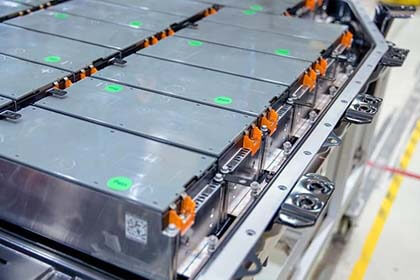
(Lithium Battery)
02 Electric Vehicles (EVs): Revolutionizing Transportation
BackThe rapid growth of electric vehicles can be largely attributed to the advancements in lithium-ion battery technology. EVs rely on lithium-based batteries to deliver the required power and extend their range. Lithium's ability to store and release energy efficiently enables EVs to travel longer distances, reducing dependence on fossil fuels and combating climate change. This section explores the critical role of lithium in enabling the electric vehicle revolution and discusses the various factors driving the adoption of lithium-ion batteries in this sector.
Electric vehicles (EVs) have emerged as a transformative force in the transportation sector, revolutionizing the way we move people and goods. They offer a cleaner, more sustainable alternative to traditional internal combustion engine vehicles. Let's explore the impact of electric vehicles and how they are revolutionizing transportation.
1. Environmental Benefits
One of the primary motivations behind the adoption of electric vehicles is their significant environmental benefits. EVs produce zero tailpipe emissions, reducing air pollution and combating climate change. By replacing fossil fuel-powered vehicles with electric alternatives, we can reduce greenhouse gas emissions and improve the quality of the air we breathe.
2. Reduced Dependence on Fossil Fuels
Electric vehicles reduce our dependence on fossil fuels, which are finite resources and contribute to geopolitical tensions. By transitioning to electric transportation, we can diversify our energy sources and rely on cleaner and more sustainable electricity generation, such as renewable energy.
3. Advancements in Battery Technology
The advancements in lithium-ion battery technology have been instrumental in driving the growth of electric vehicles. Lithium-ion batteries offer high energy density, allowing EVs to achieve longer driving ranges and improved performance. Ongoing research and development in battery chemistry and manufacturing processes aim to further enhance battery capabilities, including energy storage capacity and charging efficiency.
4. Extended Driving Range
Electric vehicles have made significant strides in terms of their driving range capabilities. With each new generation of EVs, manufacturers are pushing the boundaries to offer vehicles that can travel longer distances on a single charge. This increased range alleviates range anxiety, a common concern among potential EV owners, and makes electric vehicles a viable option for daily commuting and long-distance travel.
5. Charging Infrastructure
The development of a robust charging infrastructure is crucial for the widespread adoption of electric vehicles. Governments, private companies, and utility providers are investing in the deployment of public charging stations to ensure convenient access to charging facilities. Rapid charging technologies are also being developed, reducing the time required to recharge an electric vehicle.
6. Cost Savings
Electric vehicles offer potential cost savings over their lifetime compared to traditional combustion engine vehicles. While the upfront cost of an EV may be higher, the operational and maintenance costs are generally lower. Electric vehicles have fewer moving parts, reducing the need for regular maintenance and expensive repairs. Additionally, the cost of electricity for charging an EV is typically lower than the cost of gasoline or diesel fuel, resulting in ongoing savings for EV owners.
7. Technological Innovation
The rise of electric vehicles has spurred technological innovation in the automotive industry. Electric vehicles often come equipped with advanced features such as regenerative braking, smart connectivity, and autonomous driving capabilities. These technological advancements not only improve the driving experience but also contribute to overall road safety and efficiency.
8. Positive Market Impact
The growing market demand for electric vehicles has stimulated investment and job creation in the electric vehicle industry. Automakers are increasingly focusing on electric vehicle production, creating new employment opportunities. Moreover, the adoption of electric vehicles has a positive ripple effect on related industries, including battery manufacturing, charging infrastructure development, and renewable energy generation.
03 Portable Electronics: Empowering Connectivity
BackLithium-ion batteries have transformed the landscape of portable electronics, powering smartphones, laptops, tablets, wearable devices, and more. The high energy density and lightweight nature of lithium-ion batteries make them ideal for portable applications. This section delves into the evolution of portable electronics and the pivotal role of lithium-ion batteries in enabling seamless connectivity and uninterrupted usage.
04 Renewable Energy Storage: Storing the Power of the Sun and Wind
BackAs the world transitions towards renewable energy sources, efficient energy storage becomes crucial. Lithium-ion batteries provide a practical solution for storing energy generated from sources such as solar and wind. These batteries store excess energy during peak generation periods and release it when demand is high or when renewable sources are unavailable. This section discusses the role of lithium-ion batteries in renewable energy storage, including residential, commercial, and utility-scale applications.
05 Emerging Applications: Medical Devices, Aerospace, and Beyond
BackLithium-based batteries have expanded their reach beyond traditional applications. They find extensive use in medical devices such as pacemakers, insulin pumps, and portable diagnostic equipment, where reliable and long-lasting power sources are crucial. Furthermore, lithium-ion batteries are increasingly adopted in aerospace and aviation applications to power auxiliary systems and emergency backup systems. This section explores the emerging applications of lithium-based batteries in various sectors and their potential for further growth.
06 Grid-Level Energy Storage: Empowering the Power Grid
BackLarge-scale lithium-ion battery installations are being deployed for grid-level energy storage. These batteries help stabilize the power grid, balance supply and demand, and provide backup power during peak load periods or in case of emergencies. Grid-scale energy storage using lithium-ion batteries contributes to a more resilient and efficient power system. This section discusses the significance of lithium-ion batteries in grid-level energy storage and the potential for transforming the way we generate and consume electricity.
07To Wrap Up
BackLithium's remarkable properties have made it an indispensable component in the battery industry. From powering electric vehicles and portable electronics to enabling renewable energy storage and grid-level applications, lithium-ion batteries have revolutionized multiple sectors. As technology continues to advance, further research and development in lithium-based batteries are expected, paving the way for a sustainable and energy-efficient future. With ongoing innovations in battery chemistry and manufacturing processes, lithium-based batteries are poised to play a crucial role in the transition towards a cleaner and more sustainable energy landscape.
 +86 183 3575 8886
+86 183 3575 8886 pinklaurabao@gmail.com
pinklaurabao@gmail.com




 Message
Message Chat Now
Chat Now


